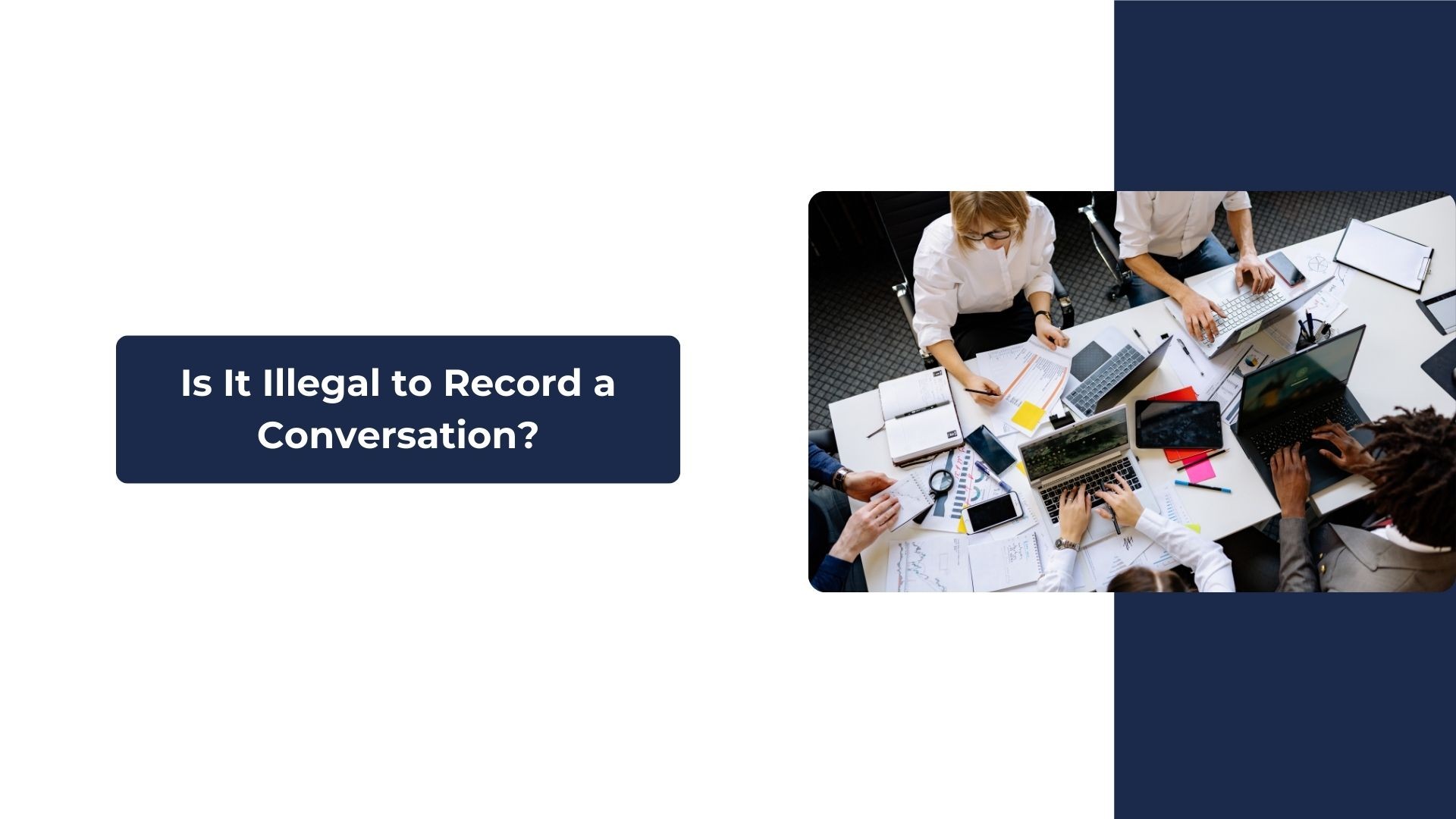Recording conversations can be a useful tool for capturing important discussions, taking notes, or gathering evidence. However, before you hit the record button, it’s crucial to know whether it’s legal to do so. Recording a conversation without proper consent can lead to legal trouble, depending on where you are and the circumstances of the recording.
In this blog, we’ll explore the legalities of recording conversations in different contexts, break down how consent laws work, and provide practical advice to ensure you stay on the right side of the law. Plus, we’ll show how tools like VOMO AI can help you make the most of your legally obtained recordings.
Understanding Consent Laws for Recording Conversations
The legality of recording a conversation primarily depends on consent laws, which vary across countries and even between states.
1. One-Party Consent Laws
In regions with one-party consent laws, you are allowed to record a conversation as long as you are one of the participants. This means that you don’t need to inform the other parties involved.
• Example: In most U.S. states, one-party consent laws apply.
• Use Case: Recording a phone call or meeting where you are a participant.
2. Two-Party (or All-Party) Consent Laws
In areas with two-party or all-party consent laws, you must obtain permission from all participants before recording the conversation.
• Example: California and Florida require all participants to consent to the recording.
• Use Case: If you’re recording a Zoom meeting or phone call, you must inform and get approval from everyone present.
3. International Consent Laws
Consent laws vary significantly across countries:
• United Kingdom: You can record a conversation if it’s for personal use, but sharing it without consent is prohibited.
• Canada: One-party consent laws apply federally.
• European Union (GDPR): Strict rules govern recording, requiring informed consent, especially if data is shared or stored digitally.
Common Scenarios and Their Legal Implications
1. Recording Phone Calls
Recording phone calls is a common scenario where consent laws apply. Always check the laws in your state or country before proceeding.
Tip: Use apps like TapeACall or Rev Call Recorder, which prompt you to obtain consent before recording.
2. Recording In-Person Conversations
If you’re meeting someone in person, the same consent laws apply. Consider informing the other party verbally or with a written agreement.
3. Recording Meetings or Classes
For meetings or educational settings, it’s good practice to announce that the session will be recorded. Many platforms like Zoom display a notification to participants when recording starts, ensuring transparency.
Best Practices to Legally Record Conversations
-
Always Inform Participants: When in doubt, disclose that you’re recording and get verbal or written consent.
-
Use Tools with Notifications: Platforms like Zoom automatically notify participants when recording begins.
-
Check Local Laws: Research the consent laws in your jurisdiction before recording.
-
Keep Recordings Private: Even if it’s legal to record, sharing the recording without consent can still lead to legal issues.
How to Get the Most Out of Your Recordings with VOMO AI
Once you’ve recorded a conversation legally, the next step is to turn that recording into actionable insights. VOMO AI is a powerful tool that helps you transcribe, summarize, and analyze your recordings efficiently.
Key Features of VOMO AI for Recorded Conversations
-
Accurate Transcriptions:
• Upload your recordings to VOMO AI, and it will transcribe the audio into text with impressive accuracy.
• Supports over 50 languages for transcription.
-
Smart Notes:
• After transcription, VOMO AI generates Smart Notes that summarize the key points of your conversation.
• Save time by focusing on the most critical parts of the discussion.
-
Ask AI Feature:
• Use the Ask AI tool to query your transcript directly. For example:
• “What were the key decisions made during the meeting?”
• “Summarize the main points of this conversation.”
-
Organized Cloud Storage:
• Securely store and access your recordings and transcriptions in the cloud.
-
Use Across Scenarios:
• Ideal for recording interviews, meetings, classes, or brainstorming sessions.
How to Use VOMO AI with Your Recorded Conversations
-
Record Your Conversation:
• Use your iPhone or recording software like Zoom to capture the conversation.
-
Upload the Audio File:
• Once recorded, upload the file to VOMO AI.
-
Get a Transcript and Smart Notes:
• VOMO AI will transcribe the audio and summarize the conversation into actionable notes.
-
Analyze with Ask AI:
• Use the Ask AI feature to dive deeper into specific sections or get instant summaries.
Final Thoughts
Recording a conversation can be a valuable tool for documentation and productivity, but it’s essential to understand and follow consent laws to ensure you’re acting legally. Whether you’re recording a business meeting, an interview, or a personal call, always prioritize transparency and respect for privacy.
Once you have a legally obtained recording, tools like VOMO AI can help you unlock its full potential by transcribing and summarizing the content.
Ready to take your recordings to the next level? Try VOMO AI today and experience smarter transcription and note-taking!



